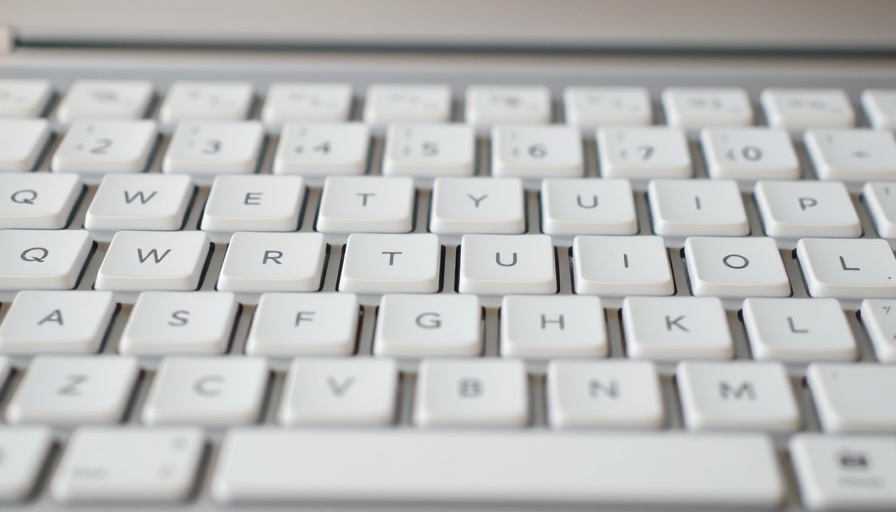
The Hidden Purpose of Your Keyboard: Understanding Raised Lines
In our fast-paced digital age, knowing how to type effectively is critical. Those little raised lines on the “F” and “J” keys on a QWERTY keyboard might seem insignificant, but they serve an essential purpose. Designed for typists, these tactile markers help position your hands correctly, allowing for efficient and accurate typing without having to glance down. This technique, known as touch typing, is not just about speed; it’s about developing muscle memory.
What is Touch Typing and Why Does it Matter?
Touch typing involves memorizing the keyboard layout so you can type with all fingers, relying less on sight. For beginners, this may seem daunting, especially if you were never introduced to proper typing techniques. Understanding touch typing can increase your productivity tremendously. According to experts, touch typists can reach speeds of 60 to 120 words per minute, compared to 30 to 40 for those who hunt and peck.
History of Typing Education: The Roots of the Raised Bumps
The raised lines on the “F” and “J” keys are remnants from the days when typing classes were common in schools. Often, students learned on keyboards covered in rubber or cloth to minimize distractions from the letters. This approach emphasized the sensation of the keyboard layout. Whether you’re reconnecting with skills from your school days or starting fresh, knowing the historical context can motivate you to master this valuable skill.
DIY Practice: Building Your Muscle Memory
Engaging with your keyboard through DIY typing projects can enhance your learning experience. Set aside a few minutes each day for focused practice. There are numerous free resources available, including online typing tutors and games designed to improve your skills quickly. Remember, the key is to develop a habit of resting your fingers on the 'home row' and using the raised bumps as a guide to navigate the entire keyboard.
Tools and Techniques for Mastering Touch Typing
Using online platforms such as TypingClub or Keybr can guide you through the learning process. These platforms offer structured lessons and exercises to reinforce your skills. A solid practice routine involves gradually increasing your typing speed while maintaining accuracy. Consider setting small weekly goals, such as mastering a specific set of keys or achieving a target words-per-minute rate.
Common Misconceptions About Typing
Many assume that typing is a basic skill that doesn’t require practice. In reality, typing proficiency comes with time and repetition. Misunderstandings about muscle memory can lead to frustration. Understanding that developing good typing habits is akin to learning a musical instrument can reshape your perspective and motivate you to invest time in learning.
Tips for Success: From Beginners to Experienced Typists
Start each practice session by placing your fingers correctly on the home row. Spend time reviewing proper finger positioning for each key to clear up any confusion. Regular breaks are also essential; they help refresh your hands and mind, allowing you to maximize your practice sessions.
Consider connecting with fellow typists online, sharing tips and experiences to enhance your skills. The support from a community can elevate your learning, and you can enjoy the process much more!
To wrap up, mastering the art of touch typing not only improves the overall efficiency of your typing but also can be incredibly satisfying. It opens doors to better job opportunities and personal projects that require quick digital communication. Are you ready to enhance your typing skills?
 Add Row
Add Row  Add
Add 



Write A Comment